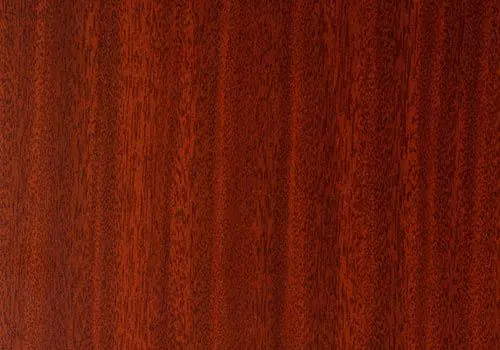Currency


The Role of Guitar Materials: How They Affect Sound and Playability
Does the guitar sound different in different materials? Yes, the material of a guitar plays a significant role in shaping its sound.
When we choosing a guitar, the materials used in its construction play a vital role in shaping both its tone and performance. Different woods and materials impact the guitar’s sound, durability, and even its feel during play. This article will explore the most common materials used in acoustic and electric guitars and explain how each affects the instrument’s overall sound.
1. Materials in Acoustic Guitars
In acoustic guitars, the choice of wood for the top, back, sides, neck, and fretboard directly influences the sound produced. Here’s a breakdown of the most commonly used materials:
Top (Soundboard)
The top of an acoustic guitar, also known as the soundboard, is crucial in shaping the guitar’s tone and resonance.
Spruce: Spruce is the most popular wood for acoustic guitar tops, particularly in mid-range to high-end guitars. It is lightweight yet strong, offering a bright, dynamic sound with excellent projection. Spruce responds well to various playing styles, from fingerpicking to strumming, making it a versatile choice.
Cedar: While not as common as spruce, cedar is often used in classical guitars and acoustic guitars designed for fingerstyle playing. Cedar produces a warmer, more mellow tone but lacks the brightness and volume that spruce offers.
Back and Sides
The wood used for the back and sides of an acoustic guitar adds depth and richness to the sound.
Mahogany: Mahogany is one of the most commonly used woods for the back and sides of acoustic guitars. It provides a warm, well-balanced sound with a strong midrange. This wood is popular in mid-range guitars due to its affordability and tonal qualities.
Rosewood: Rosewood is a favorite for higher-end guitars, known for its rich, deep sound with pronounced bass and sparkling highs. It is often used in premium instruments for its tonal complexity.
Laminate: Laminate wood, made from thin layers of wood glued together, is a common choice for entry-level guitars. While it doesn’t offer the same resonance as solid wood, laminate is durable and affordable, making it suitable for beginners.
Neck
The neck of an acoustic guitar must be both durable and comfortable for the player’s hand.
Mahogany: Mahogany is the most common wood for acoustic guitar necks due to its strength, durability, and balanced tonal qualities. It pairs well with many different body woods.
Maple: Less commonly used in acoustic guitar necks, maple is known for its bright, snappy sound. It is more often seen in electric guitar necks.
Fretboard
The fretboard material impacts the guitar’s playability and subtly influences its tone.
Rosewood: Rosewood is by far the most common material used for acoustic guitar fretboards. It offers a smooth playing surface and contributes to a warm, rounded tone.
Ebony: Found in higher-end guitars, ebony is dense and durable, providing a sleek feel under the fingers. It also gives the guitar a brighter, more articulate tone than rosewood.
2. Materials in Electric Guitars
Electric guitars rely on pickups to produce sound, but the materials used in the body, neck, and fretboard still have an important impact on tone, sustain, and playability.
Body
The type of wood used for the body of an electric guitar affects its resonance, sustain, and overall tonal quality.
Alder: Alder is one of the most common woods used for electric guitar bodies, particularly in Fender models like the Stratocaster. It has a balanced, full sound with a slight emphasis on the midrange. Alder is also lightweight, making it comfortable for long playing sessions.
Mahogany: Often seen in guitars like the Gibson Les Paul, mahogany provides a warm, rich sound with excellent sustain. It is heavier than alder, but its tonal warmth is favored by many players, especially in blues and rock genres.
Basswood: Basswood is a popular choice for mid-range electric guitars. It is lightweight and provides a balanced tone, though it is often considered less resonant than alder or mahogany.
Maple (Top): Some electric guitars feature a maple top over a mahogany or alder body. This combination adds brightness to the sound while maintaining the warmth and sustain of the underlying wood.
Neck
The neck wood plays a key role in both the guitar’s tone and playability.
Maple: Maple is one of the most common neck materials for electric guitars. It is known for its bright, clear tone and is durable enough to handle the tension of metal strings.
Mahogany: Mahogany necks are often found on electric guitars designed for warmer tones, as the wood adds a smoothness and depth to the sound.
Fretboard
Like acoustic guitars, the fretboard of an electric guitar affects both playability and tonal character.
Rosewood: The most common fretboard material for electric guitars, rosewood provides a warm, rich tone and a comfortable feel for the fingers. It’s softer than maple, giving it a slightly darker sound.
Maple: Maple fretboards are known for their brightness and snappy attack, making them popular in genres that require clarity, like country and rock. They are often seen in Fender guitars.
Ebony: Ebony is typically used in high-end guitars. It offers a smooth, fast playing surface and adds a bright, articulate tone to the guitar’s sound.
3. Other Components (Bridge, Nut, and Pickups)
In both acoustic and electric guitars, other materials, such as the bridge, nut, and pickups, play a role in shaping the sound.
Bridge and Nut Materials:
Plastic: Common in entry-level guitars, plastic is affordable but doesn’t offer as much resonance or sustain as other materials.
Bone: Found in mid-range and high-end guitars, bone is a natural material that provides excellent sustain and clarity.
Tusq (Synthetic): A popular alternative to bone, Tusq offers similar tonal benefits at a lower cost.
Pickups (Electric Guitars Only): While not a material in the traditional sense, the type of pickups used (single-coil, humbucker) has a massive impact on the guitar’s tone. The materials in the magnets (such as Alnico or ceramic) also shape the sound, with Alnico providing a warmer, vintage tone and ceramic offering a brighter, more modern sound.
Choosing the right guitar involves more than just picking a model you like—it’s also about understanding how the materials affect the sound and playability. Whether you’re looking for the bright, dynamic tones of a spruce-topped acoustic guitar or the warm sustain of a mahogany electric guitar, the materials used in the instrument play a pivotal role. Knowing these details can help you select a guitar that perfectly suits your musical style and preferences.
Email cannot be empty
Password cannot be empty
Email format error
Email cannot be empty
Email already exists
6-20 characters(letters plus numbers only)
The password is inconsistent
Email format error
Email cannot be empty
Email does not exist
6-20 characters(letters plus numbers only)
The password is inconsistent